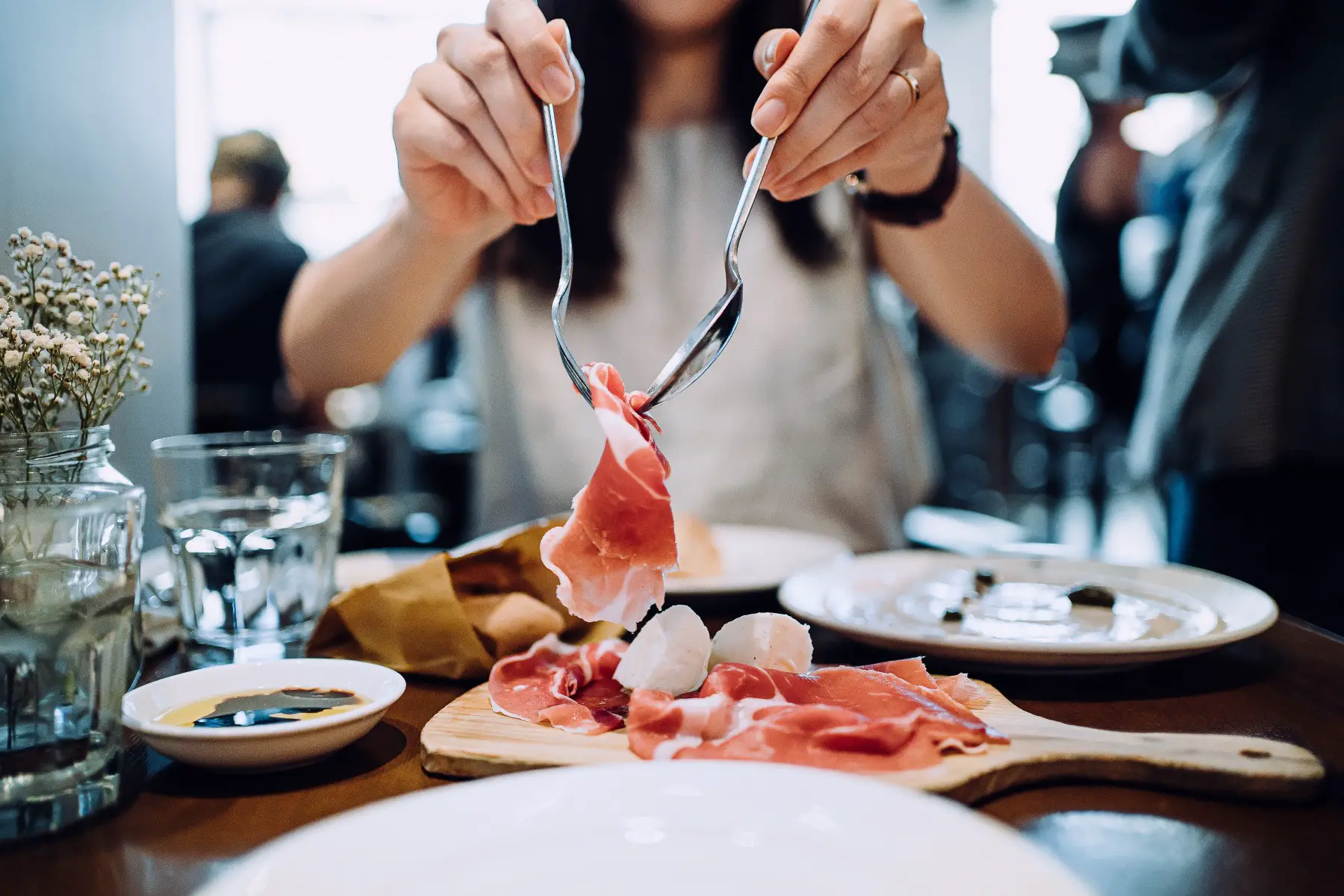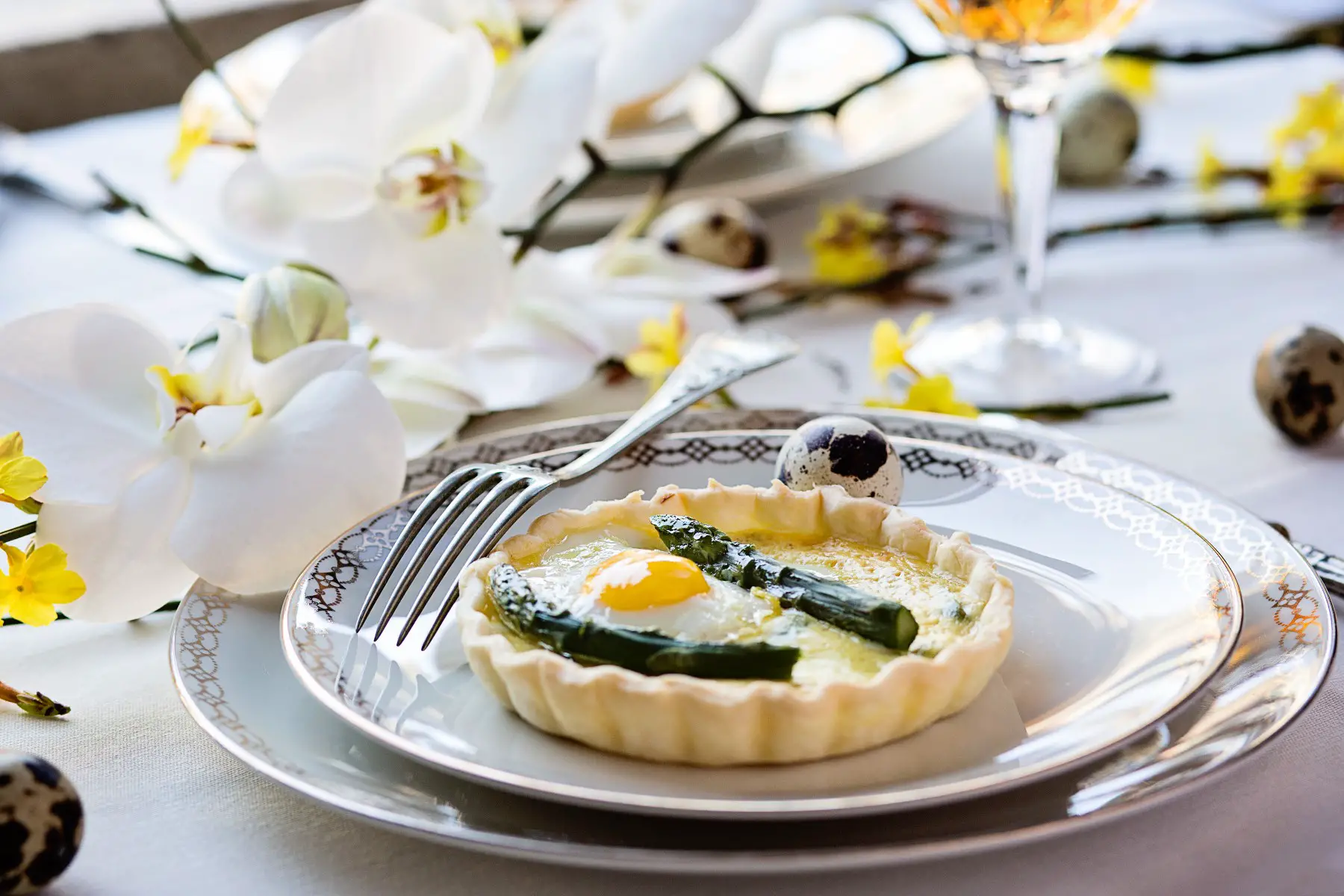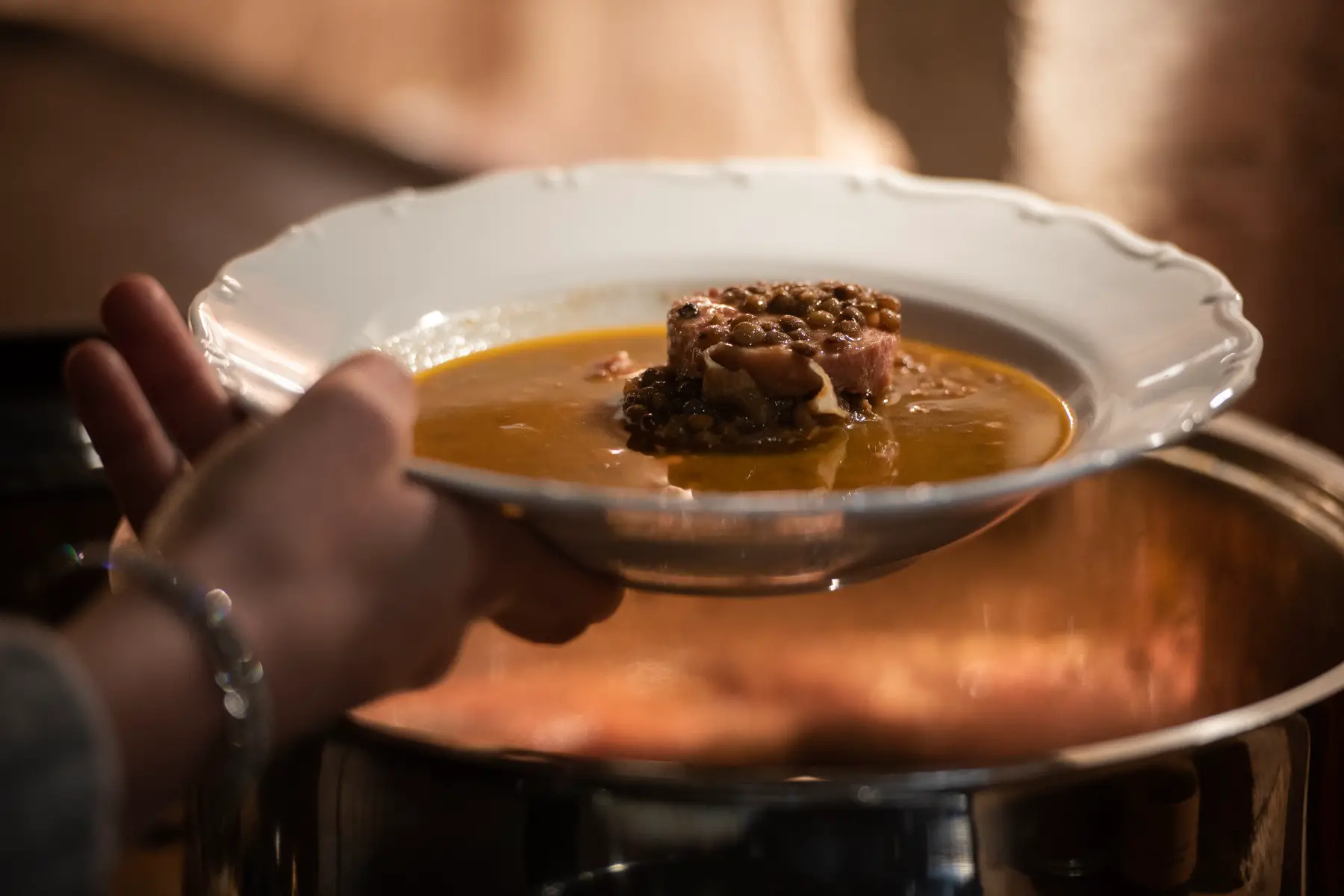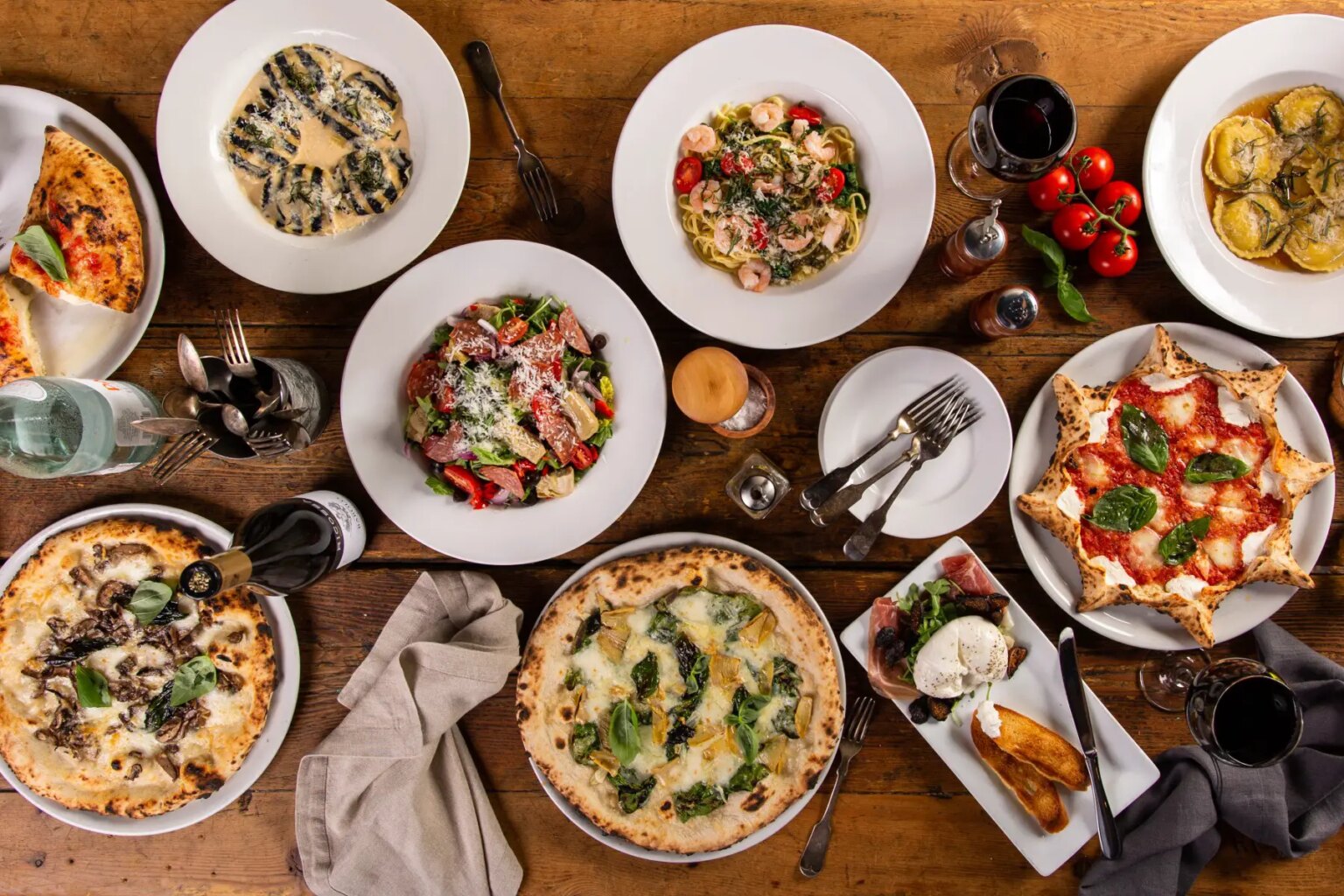Italian food is popular across the world, and with good reason. Italy’s sumptuous gastronomic landscape is filled with hyper-fresh seasonal produce, time-honored recipes, and more traditions than you can shake a stick at. For expats moving to Italy, the process of getting a visa and finding a job will pale in comparison to exploring the richness of the country’s cuisine.
Get a taste of what’s in store with the following sections:
HelloFresh
Want to create some classic Italian dishes in your own kitchen? HelloFresh is a leading meal-kit provider that delivers innovative recipes from Italy and around the world straight to your doorstep. Choose from a range of recipes and let HelloFresh transform mealtime for you and your family.
Cuisine in Italy
Although most people will associate Italy merely with pasta and pizza, in reality, its gastronomic landscape is highly diverse and full of nuances. Italian cuisine contains a rich tapestry of textures, flavors, and fresh produce that is influenced by the country’s unique history and geography.

Thanks to its use of highly-seasonal fresh produce, Italy also has one of the healthiest cuisines in the world. According to the 2022 Bloomberg Global Health Index, the country scores 91.59 out of 100. That makes it the second healthiest country in the world after Spain, which scored 92.75. In fact, the food is of such high quality that Italy boasted 381 Michelin-star restaurants in 2022. That was the third-highest concentration in the world, just after France (628) and Japan (577).
Historical background
Modern Italian gastronomy has its roots in ancient Rome. The Roman Empire occupied vast areas across Europe, the Mediterranean, northern Africa, and Asia Minor. As they colonized new swathes of territory, they discovered new herbs, spices, and ingredients to incorporate into Roman cuisine. These included spices from the Middle East, grains from northern Africa, and vinegar from Asia Minor.
The ancient Romans didn’t just export ingredients but also cooking methods. Pasta, for example, arguably one of Italy’s most iconic foods, is attributed to the Etruscans, who were neighbors to the Romans in present-day Italy. Other influences include:
In medieval times, Christianity played a large role in people’s diets. Certain ingredients gained popularity due to their religious importance, including:
- Bread (pane)
- Cheese (formaggio)
- Dairy (latticini)
- Eggs (uova)
- Legumes (legumi)
- Fish (pescare)
- Fruit (frutta)
- Honey (miele)
Other influences were general geography and climate. For example, northern Italy experiences cold winters and has a mountainous terrain. Its cuisine is influenced by Germanic and Slavic kitchens. The south gets far more sun and has access to the sea. Parts of it were long conquered by the Arabs who introduced foods like sardines, pistachios, and (dried) pasta.
Due to the geographical impacts, you’ll see a preference for hot soups, polenta, and risotto in the north, a focus on heavy meats and game in the center, and a love of seafood and dairy in the south.

During the Renaissance, the notion of food evolved and flourished. It became a source of enjoyment and cultural exchange. Tomatoes were introduced to Italy by the Spanish, as well as other New World ingredients such as zucchini, peppers, squash, beans, corn, and chocolate.
With the Unification of 1861 (il Risorgimento), the distinct flavors and culinary traditions of Italy’s different regions came together. This created the rich tapestry that is modern Italian cuisine.
The Italian diet
For many people, the Italian diet is the perfect answer to their weight loss question. It has a lot of plant-based foods like vegetables, fruits, whole grains, and legumes, and moderate amounts of protein and animal fats. Part of the diet is a focus on proportion and lifestyle. For example, Italians enjoy a small breakfast, a large lunch, and a mid-sized dinner that keeps them going throughout the evening.
Breakfast
Most Italians will start their day between 07:00 and 10:30 with something small and sweet. Typical breakfast foods are:
- Fette biscottate (twice-baked bread) with jam or chocolate-hazelnut spread
- Fresh pastry such as a cornetto, saccottino, or ventaglio
- Pane burro e marmellata (bread with butter and jam)
Often, you will see people standing at the counter of their local café (bar), enjoying their breakfast on the go (colazione al bar). This morning ritual is not so much a daily occurrence, as it is a way to catch up with friends and neighbors.
It is common to get a milky coffee (e.g., caffè latte and cappuccino) with your breakfast (colazione). Due to the high fat content, these are normally only consumed in the morning.
Lunch
Lunch (pranzo) is the main meal of the day in Italy and is usually a hearty affair. Most locals will eat at around 13:00, though it can take place at any time between 12:30 and 14:30. In some instances, people will have a ‘second breakfast‘ (seconda colazione) at noon, thus shifting lunch time till even later.
Generally, lunch includes two or three courses. For example, you might have a starter (primi) of soup or pasta, and a main meal (secondi) of meat or fish. Some Italians will enjoy a glass of wine with their lunch.

When busy with work, many will make do with a quick lunch. This might be a panini (sandwich) or pizza, for example. Tavola calda (translates to ‘hot table’) is a cafeteria-style concept that is also popular among working Italians. It consists of pre-made food that you stand in line for with a tray.
Aperitivo
Cocktail hour (aperitivo) is especially popular in the north of Italy but exists in the south as well. Milan is considered aperitivo capital, and cities like Rome, Florence, and Naples have growing scenes.
Aperitivi are pre-dinner drinks that serve as an appetizer to dinner. It usually occurs between 18:00 and 20:00. Most Italians will meet up with friends and enjoy a drink with some finger foods in a local piazza or park.
You won’t bring the snacks and drinks yourself, but order them from a hosting restaurant or bar that has various drink and food options. If the drinks turn into dinner, it is called an apericena (aperitivo plus dinner).
Dinner
Whether with family or friends, dinner (cena) in Italy is commonly a social event. The long, lingering meals often start between 20:00 and 22:00, although, it can be later.
When eating at home, Italians might enjoy a simple version of lunch. For instance, this could mean a small pasta, followed by a meat dish with a vegetable side.
When going out, dinner can go through a full five courses, including appetizers (antipasti) and dessert dolci). Most Italians will drink wine during dinner and complete the meal with a digestive (digestivo) or coffee.
Snacks
Like the rest of Italian cuisine, snacks (merende) in Italy can vary greatly by region. Most of the typical snacks appear to be fried, though local seasonal fruits are also a popular food between meals.
Typical snacks include:
- Arancini on the island of Sicily (Sicilia)
- Cellipieni in the Abruzzo region
- Crema fritta in the Emilia-Romagna region
- Pan meino in Lombardy (Lombardia)
- Tramezzino veneziano in the Veneto region

Most Italians will enjoy a snack break – called merenda – once or twice a day. Normally, this occurs around 10:00 or 16:00. They might go for something fried, pop into a bar for a pastry, or – if it is summer – grab a gelato.
Special festive meals
There are a number of public holidays in Italy that are customarily celebrated with food. Every region (and family) has its own recipes and traditions, however, there are several points in common despite the distances.
Epiphany
On 6 January, the Christmas Witch Epiphany (Epifania) treats well-behaved children to sweets and gifts, and bad-mannered children to coal. It is one of the most celebrated holidays in the country and marks the last day of the Christmas season before returning to normal life.
Usually, Italians will get together with their families to enjoy an easy-to-make and informal lunch. Menus often feature spezzatino dell’Epifania and lasagne alla bolognese. Other common Epiphany dishes differ per region, including:
- Cappon magro in the Liguria region
- Cavallucci di Siena in Tuscany (Toscana)
- Fugasa d’la Befana in Piedmont (Piemonte)
- Pettole in the Apuglia (Puglia) region
- Prima pastiera dell’anno in the Campania region
Easter
As Catholics make up the majority of Italy, Lent (Quaresima) always played an important role in the year. Traditionally, Italians fast for 40 days and swear off indulgent foods like meat, eggs, dairy, honey, and chocolate. After abstaining for a little over a month, it all culminates into a huge feast on Easter (Pasqua).
A key part of the Eastertide celebrations is Easter bread. There are many regional variations, including tortano Pasquale (braided bread with whole eggs on top) and kulich cruffin di Pasqua (bread with 33 layers of dough, symbolizing the 33 years of Jesus’ life).
Due to its pagan origins, eggs factor significantly in the festivities and the menu. Egg-based dishes such as torta Pasqualina and brodetto Pasquale are wildly popular. Other common Easter starters are minestra maritata di Pasqua (Easter ‘married soup’) and fellata Napoletana.

Most families will serve lamb as their main course, symbolizing spring and rebirth. Classic dishes include Agnello atta Scottadito (grilled lamb chops) and Stinco di Agnello Brasato al Forno (braised lamb shanks). Fresh seasonal vegetables such as artichokes and asparagus are also common.
To end the meal, Italians sometimes enjoy sweet desserts such as Pastiera Napoletana or Tuscan Pasimata.
Republic Day
Republic Day (Festa della Repubblica Italiana) on 2 June is always a joyous occasion in Italy. Most people will get together with family and friends to enjoy a celebratory lunch.
Because the holiday originates from 1946, there are no long-established recipes that were handed down for generations. Republic Day dishes often feature the three colors (tricolore) of Italy’s flag – red, white, and green. Common menu items include:
- Insalata caprese
- Lasagne alla bolognese con sfoglia verde
- Pasta tricolore
- Pizza tricolore
Immaculate Conception
One of Italy’s most important religious celebrations is the Feast of the Immaculate Conception of the Blessed Virgin Mary (Festa della’Immacolata Concezione della Beata Vergine Maria), or simply, Immacolata Concezione.
The public holiday takes place on 8 December and is often seen as a precursor to Christmas. Italians spend the day with family (and sometimes) close friends), decorating the tree, shopping for presents, and enjoying a large meal.
Specialties for this day vary by region. In Puglia, for example, people serve pettole or pittule. These are cakes of bread dough, stuffed with ricotta, tuna, capers, and tomato. In Sicily, families will enjoy sfincione (an onion pizza), battered cardoons, artichokes, cauliflower, and fried cod.
Christmas
The Christmas season is celebrated in abundance. Homes and tables are decorated, and loads of traditional dishes are served during lunch or dinner. Although the spread varies throughout Italy, there are two items that cannot be left off the Italian Christmas menu: pandoro and panettone.

The first (i.e., pandoro) is a sweet, fluffy Christmas cake with a sprinkling of powdered sugar, originally from Verona. The second (i.e., panettone) is a Milanese cake with candied fruit.
Christmas Eve
On 24 December, Christmas Eve (La Viglia di Natale), most southern homes will prepare a large fish-based meal. This is due to the religious dogma that you cannot eat meat the night before important religious holidays. The most common dishes are baccalà (dried and salted cod), capitone (eel), and frutti di mare (seafood).
Christmas Day
The most important meal of Christmas Day (Il Giorno di Natale) is a hearty lunch with the family. On 25 December, the menu is rich in courses and recipes are often meat-based.
Time-honored Christmas foods are many and vary by region. Typical dishes include:
- Brodetto alla Termolese in the Molise region
- Brovada and muset in the Friuli-Venezia Giulia region
- Pangiallo in the Lazio (Latium) region
- Strascinati in the Basilicata region
- Vincisgrassi in the Marche region
As a dessert, Italian homes always serve a pandoro or panettone.
Day after Christmas
Many see 26 December, or the Feast of Saint Stephen (Il Giorno di Santo Stefano), as another great excuse to socialize. This time, lunch is a more relaxed affair that friends may attend. Most people will use their Christmas leftovers (avanzi) to create a hodgepodge of new dishes for the meal.
New Year’s Eve
Less than a week later, the western world celebrates New Year’s Eve (Capodanno). Italian cuisine has several traditional dishes to laud in the new year, and each one uses an ingredient that symbolizes good luck. For example, a popular custom is eating seven types of dried fruit and nuts for good luck.
Another nationwide tradition is to have cotechino (or alternatively zampone) with lentils (lenticchie) at the stroke of midnight. Both the fat of the sausage and the lentils symbolize wealth and prosperity.

Dinners on New Year’s Eve are characterized by a multitude of courses and dishes. Every region has its own tried and tested recipes, for example:
- Cabude on the island of Sardinia (Sardegna)
- Canederli in the Trentino-Alto Adige region
- Penne alla Norcina in the Umbria region
- Pizzoccheri in the Valle d’Aosta region
- Sazizzi e rapi affucati in the Calabria region
Finishing on a sweet note, Italians throughout the country often enjoy pandoro, panettone, or torrone as dessert.
Most used ingredients
The Italian kitchen revolves around the seasons, and you may only see certain dishes for a few weeks of the year when the ingredients are available.
Many regions and towns are specialized in their own local products and recipes. As such, there is a multitude of different products available, including olive oil (olio d’oliva), balsamic vinegar (aceto balsamico), pasta, rice, sauces, and wine.
Meat
Meat (carne) is a mainstay of Italian cuisine, especially in the landlocked central regions. Beef (manzo) chicken (pollo), and pork (maiale) are by far the most popular types of meat. However, you might also find other meats on the menu, including:
- Game meat (selvaggina)
- Horse meat (cavallo)
- Mutton (montone)
- Rabbit (coniglio)
Well-known meat-based dishes include:
- Bistecca alla Fiorentina
- Ossobuco alla Milanese
- Saltimbocca alla Romana
Cured meats (salumi) are also popular across the country. These include bresaola, mortadella, pancetta, prosciutto, and soppressata.
Fish and other seafood
Fish and seafood (frutti di mare) are particularly favored in the coastal parts of Italy.

These regions use a wide array of sea-gained ingredients, including:
- Shellfish (crostacei)
- Sea urchin (riccio di mare)
- Tuna (tonno)
- Squid (calamare)
- Octopus (polpo)
Depending on the region, you can enjoy a wealth of local seafood specialties. For example:
- Acqua pazza
- Fettuccine alle vongole
- Cacciucco alla Livornese
- Linguine al nero di seppia
Vegetables
Due to its diverse geography, temperate climate, and fertile soil, Italy’s culinary landscape contains an incredible range of fresh, seasonal produce. Widely-used ingredients include:
- Artichoke (carciofo)
- Fennel (finocchio)
- Tomato (pomodoro)
- Mushroom (funghi)
- Zucchini (zucchine)
Across the country, you will find vegetables in salads, vegetarian mains, and side dishes (contorni). Classic dishes include:
- Caponata
- Melanzane alla parmigiana
- Panzanella
- Risotto ai funghi
- Tortelli di zucca
Fruits
Part of the Italian diet is, of course, an abundance of fresh fruits that are produced locally. The lemons (limoni) from Sicily, Amalfi, and Sorrento are justifiably world-famous. Sicily cultivates two types of juicy oranges (arancia di ribera and arancia rossa), while Bologna produces ripe cherries (amarena). Also widely available are Veronese peaches (Pesca di Verona) and Salernitan figs (fico bianco del cilento).
Carbs
Carbohydrates are well-represented in the Italian kitchen. On average, Italians consume 23 kilos of pasta and 41 kilos of bread per year.

Common Italian foods that contain carbs include:
- Grains (e.g., bread, pasta, pastries, and rice)
- Legumes (e.g., beans, lentils, and peas)
- Starchy vegetables (e.g., potatoes and polenta)
Cheese and dairy products
Cheese and dairy are staples in Italian cuisine. Easy examples that come to mind are desserts (e.g., gelato, panna cotta, and semifreddo) and coffees (e.g., cappuccino and caffè latte). But perhaps most famously are the Italian cheeses.
Again, most regions and towns produce their own specific types of cheese. Often these are variants of:
- Burrata
- Gorgonzola
- Grana Padano
- Mascarpone
- Mozzarella
- Pecorino
- Parmigiano Reggiano
- Ricotta
While some recipes use cheese as an add-on, for others it is the main ingredient. For example:
- Cacio e pepe
- Cannoli
- Fonduta alla Valdostana
- Pesto alla Genovese
- Tiramisu
Herbs and spices
As with all other types of cuisines, Italian food uses herbs and spices to add flavor and flair. Many of these arrived in the country during the Roman times, and their use has evolved over the centuries. In Italian kitchens you will often find:
- Basil (Basilico) – popular for use in pesto sauces, but also in salads and dressings
- Thyme (Timo) – often seen in stews, soups, and roasted meats
- Oregano (Origano) – a favorite for pizza and pasta sauces
- Rosemary (Rosmarino) – best for meat dishes
- Parsley (Prezzemolo) – a great all-rounder
- Marjoram (Maggiorana) – another good all-rounder that is similar to oregano but slightly milder and sweeter
Sauces and condiments
The Italian kitchen features a large assortment of sauces. These are usually to complement a pasta dish but can also be served with meat and fish. Popular sauces include:
- Marinara
- Pesto Genevese
- Ragù alla Bolognese
- Salsa Verde (i.e., green sauce)
- Vincotto (i.e., cooked wine)
Italians are not huge fans of common condiments, such as ketchup, mayonnaise, mustard, steak sauce, or brown sauce. However, condiments like olive oil and balsamic vinegar are available in all supermarkets (supermercato) and grocery stores.

Italy is the world’s second-highest producer of extra virgin olive oil behind Spain and has three kinds of ‘protected’ balsamic vinegar. The three are:
- Aceto Balsamico di Modena
- Aceto Balsamico Tradizionale di Modena
- Aceto Balsamico Tradizionale di Reggio Emilia
The latter two have the seal Protected Designation of Origin, meaning no other region or country can make these kinds of vinegar.
Another widely-used condiment is gremolata – a mix of herbs and lemon – that adds a zesty, herbal punch.
Most famous Italian dishes
If you’d like to try some of the most well-known dishes in Italy, you can check out our top 10 Italian foods with recipes. Here are some other iconic flavors that you might be tempted to taste:
- Ragù Napoletano – catering to the carnivorous, this dish from Naples encapsulates the spirit of Italian cooking – perhaps better than any other. Ingredients include beef, lard, minced pork, pancetta, pork ribs, prosciutto, red wine, steak, tomato, young Pecorino cheese, and lots of time and patience.
- Riso al salto – made with leftover saffron risotto, this fried rice dish is a great way to combat food waste. Simply add in an egg, leave it overnight, and create a rice pancake the next day.
- Tagliatelle con taleggio e tartufo – this dish from Northern Italy is a love poem to the black truffle. It is a flavorsome pasta dish with melted taleggio cheese, butter, and cream, and is covered with truffle.
Most well-known desserts
Italian cuisine would be incomplete without its sweet treats. Some of the world-famous desserts of Italian origin include:
- Cannoli – a Sicilian dough shell with sweet ricotta filling
- Cassata – a liqueur-drenched genoise sponge cake layered with sweetened ricotta and fruit preserves, decorated with a marzipan shell and colorful candied fruits
- Panna cotta – a custard-like treat originally from Piedmont
- Tartufo – a delicious bonbon of ice cream, dark truffle chocolate, whipped cream, and cacao powder, served with chocolate of vanilla sauce
- Tiramisu – a layered dessert with coffee-soaked sponge fingers, mascarpone, egg, sugar, and a dash of Marsala wine
Useful resources
- Life in Italy – learn the history of Italian cuisine
- Walks of Italy – discover the landscape of regional Italian cuisine




